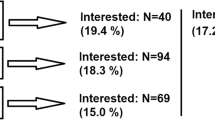Summary
Chelatable lead (PbU-EDTA) is the best indicator of lead concentration at the critical organ level (indicator of dose). However, since this test is not easily applicable for the biological monitoring of lead-exposed subjects, the current practice is to determine lead in blood (PbB) and/or in urine (PbU). But these tests are indicators of exposure and not of dose. To analyze the reliability of PbB and PbU in estimating lead dose, the relationships between PbU-EDTA and PbB and between PbU-EDTA and PbU were studied in two groups of male lead workers: 48 currently exposed and 45 with past exposure to lead.
In currently exposed workers the correlation between PbU-EDTA and PbB and between PbU-EDTA and PbU was very close (r = 0.85, r = 0.74, respectively); in past exposed workers the correlation with PbU-EDTA was decidedly lower for PbB (r = 0.54) and not significant for PbU (r = 0.29). In both cases the relationship between the variables was linear. In the previously exposed men, PbB displayed lower values than those found in currently exposed men.
These results indicate that both PbB and PbU allow an indirect estimation to be made of the internal dose in currently exposed subjects, whereas the tests cannot be used for this purpose in subjects who have long since ceased to be exposed. In these cases chelatable lead must be determined.
Similar content being viewed by others
References
Alessio, L., Farina, G.: Profilassi e terapia dell'intossicazione da piombo con farmaci chelanti: Rassegna critica. Med. Lav. 62, 451–461 (1971)
Alessio, L., Bertazzi, P. A., Toffoletto, F., Foà, V.: Free erythrocyte protoporphyrin as an indicator of the biological effect of lead in adult males. I. Relationship between free erythrocyte protoporphyrin and indicators of internal dose of lead. Int. Arch. Occup. Environ. Health 37, 73–88 (1976a)
Alessio, L., Bertazzi, P. A., Monelli, O., Foà, V.: Free erythrocyte protoporphyrin as an indicator of the biological effect of lead in adult males. II. Comparison between free erythrocyte protoporphyrin and other indicators of effect. Int. Arch. Occup. Environ. Health 37, 89–105 (1976b)
Alessio, L., Bertazzi, P. A., Monelli, O., Toffoletto, F.: Free erythrocyte protoporphyrin as an indicator of the biological effect of lead in adult males. III. Behaviour of free erythrocyte protoporphyrin in workers with past lead exposure. Int. Arch. Occup. Environ. Health 38, 77–86 (1976c)
Araki, S.: Evaluation of lead mobilization test with intravenous infusion of Ca EDTA in workers occupationally exposed to lead. Ind. Health 13, 179–189 (1975)
Armitage, P.: Statistical methods in medical research, cap. 5 and 9. Oxford: Blackwell Scientific Publications 1971
Baloh, R. W.: Laboratory diagnosis of increased lead absorption. Arch. Environ. Health 28, 198–208 (1974)
Beritic, T.: Lead concentration found in human blood in association with lead colic. Arch. Environ. Health 23, 289–291 (1971)
Chisolm, J. J., Jr.: Lead poisoning. In: Pediatrics. Rudolph, A. M., Barnett, H. L., Einhorn, A. A. (eds.), 16th ed., pp. 797–805. New York: Appleton Century Crafts
Chisolm, J. J., Jr., Mellits, E. D., Barret, M. B.: Interrelationships among blood lead concentration quantitative daily ALA-U and urinary lead output following calcium EDTA. In: Effects and dose-response relationships of toxic metals. Nordberg, G. F. (ed.) pp. 416–433 Amsterdam: Amsterdam
Kehoe, R. A.: Occupational lead poisoning. 2—Clinical signs of absorption of lead. JOM 14, 390–396 (1972)
Lilis, R., Fishbein, A.: Chelation therapy in workers exposed to lead. JAMA 28, 235–236 (1976)
Nordberg, G. F.: Effects of dose-response relationships of toxic metals. Chaps. 2–5, pp. 10–18 Amsterdam: Elsevier
Selander, S., Cramer, K.: Interrelationship between lead in blood, lead in urine and ALA in urine during lead work. Br. J. Ind. Med. 27, 28–39 (1970)
Teisinger, J., PŘerovská, I., šedivec, V., Flek, J., Roth, Z.: Attempt on determination of biologically active lead in organism in experimental poisoning. Int. Arch. Gewerbepath. Gewerbehyg. 25, 240–255 (1969)
Zielhuis, R. L.: Dose-response relationships for inorganic lead. I. Biochemical and haematological responses. Int. Arch. Occup. Environ. Health 35, 1–18 (1975)
Zielhuis, R. L.: Second International Workshop on Permissible Levels for Occupational Exposure to Inorganic Lead, September 1976, Amsterdam. Int. Arch. Occup. Environ. Health 39, 59–72 (1977)
Author information
Authors and Affiliations
Rights and permissions
About this article
Cite this article
Alessio, L., Castoldi, M.R., Monelli, O. et al. Indicators of internal dose in current and past exposure to lead. Int. Arch Occup Environ Heath 44, 127–132 (1979). https://doi.org/10.1007/BF00386746
Received:
Accepted:
Issue Date:
DOI: https://doi.org/10.1007/BF00386746




